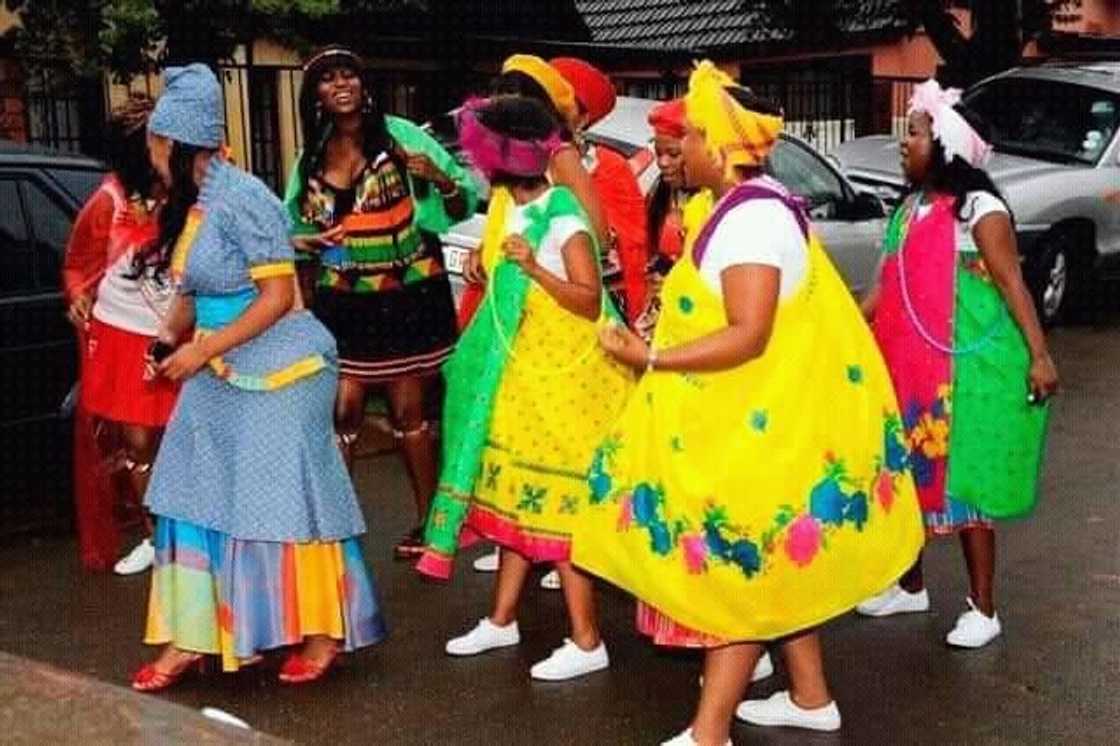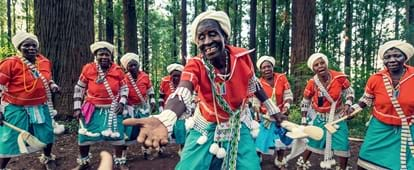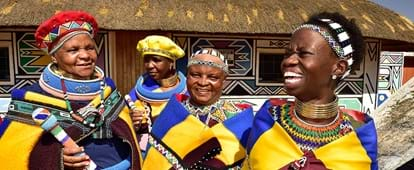Some Known Details About South African Culture Today
Table of ContentsSome Of South African Culture TodaySouth African Culture Today Things To Know Before You Get ThisExcitement About South African Culture TodayWhat Does South African Culture Today Do?South African Culture Today - An OverviewA Biased View of South African Culture Today
This follows with vocal singing and drum whipping. The couple then satisfy with the seniors and discuss the significance of their union. An issue of importance in Zambian villages is the passing away of liked ones. All participants of the village put money, effort and time together for the interment of the deceased.Music and dance is an extremely vital facet of the Zambian society. The numerous tribal devices have their own dancing kinds; nonetheless, makishi is common amongst all tribes.
Rumored Buzz on South African Culture Today
When it concerns songs, drums are utilized the most, with a range of drumming events. In Zambia, majority of individuals are Christian; Protestant and Roman Catholic. There are little teams of Muslims and Hindus, with the remainder adhering to neighborhood native tribal ideas.

South African heritage and society is profoundly diverse, and includes various teams of individuals that each have their own customs and ideas. Having such a variety of individuals and cultures is what makes South Africa so one-of-a-kind. In real feeling of the expression, we are a rainbow country.
South Africa has approximately three hundred thousand Portuguese people residing in it. Making it the 7th on the listing of countries with the most Portuguese individuals in it outside of Portugal. Portuguese is not just a society, however it is likewise a language and a citizenship. Portuguese people stem from the nation of Portugal in Europe, however, as a result of Portugal (like many various other nations in Europe) discovering the globe and overcoming other countries during the 15th 20th centuries, South Africa has what we call Portuguese South African's living in it.
The 45-Second Trick For South African Culture Today
Amongst the famous features of the topography is a plateau that covers almost 2 thirds of the center of the nation. The plateau complex increases towards the southeast, where it climaxes in the Drakensberg variety, component of an escarpment that divides the plateau from the coastal locations. The Drakensburg includes Sparkling wine Castle, the greatest optimal in the country.
The area north of the Witwatersrand, called the bushveld, inclines downward from eastern to west toward the Limpopo River, which creates the global border. The western section of the plateau, the middleveld, also descends towards the west and differs in elevation in between the highveld and bushveld. Between the Drakensburg and the eastern and southerly coast, the land descends to the sea.
Nearer the coastline there is a low-lying plain called the eastern lowveld. Southwest of the plateau the nation comes to be progressively a lot more dry, giving way to the hostile desert of the Great Karroo, surrounded on the east by the lower, much better watered plateau of the Little Karroo. Dividing the completely dry southerly interior from the sandy littoral of the southerly coastline and West Cape is an additional variety, the Langeberg.
Top Guidelines Of South African Culture Today
The country's racially, ethnically, and politically split background has actually generated national and subnational symbols that still function as icons of the nation, and others icons that are approved only by specific groups. The monoliths to white settler conquest and political supremacy, such as the Afrikaner Voortrekker ("pioneer") Monument in Pretoria and you can try these out the Rhodes Monument honoring the British colonial empire home builder and Cape prime minister Cecil Rhodes, remain sectarian icons.
The first modern inhabitants were the San ("bushman") hunter-gatherers and the Khoi ("Hottentot") peoples, who herded animals (South African culture today). The San might have existed for thousands of years and left evidence of their visibility in countless ancient cave paints ("rock art"). Bantu-speaking clans that were the forefathers of the Nguni (today's amaZulu, amaXhosa, amaSwazi, and vaTsonga individuals) and Tswana-Sotho language groups (today's Batswana and Southern and Northern Basotho) migrated below east Africa as early as the fifteenth century

The 2 former republics of the Orange Free State and Transvaal (South African Republic) were developed by Afrikaner settlers that defeated and dispossessed the Basotho and Batswana. Lesotho would have been by force incorporated right into the Orange Free State without the extension of British defense in 1869. The supreme marriage of the country arised from the South African War (18991902) between the British and the 2 Afrikaner republics, which reduced the nation to wreck at the beginning of the twentieth century.
Afrikaners historically considered themselves the only real South Africans and, while granting full citizenship to all citizens of European descent, rejected that standing to people of color up until the autonomous transition of 1994. British South Africans maintain a feeling of cultural and social connection to Great Britain without deteriorating their identification as South Africans.
The smart Trick of South African Culture Today That Nobody is Talking About
The variety and fragmentation within ethnic groupings and the balance of tensions between those groups during the twentieth century avoided interethnic civil dispute. While intergroup tensions over resources, privileges, and political prominence continue to be, those problems are as most likely to pit Zulu against Zulu as Zulu against Xhosa or African versus Afrikaner.
From colonial India, British sellers and managers brought the rounded steel decorative roofings and slender lace job pillars that still typify the terraces of Look At This cottages in towns and cities throughout the nation. Houses of prayer contribute an essential architectural facet even in the tiniest communities. In addition to the soaring steeples and classic stonework of Afrikaans Dutch Reformed churches, Anglican churches, synagogues, mosques, and Hindu temples supply variety to the religious architectural scene.

Slaughtering and the brewing of typical cereal beer are important in safeguarding the engagement and a good reputation of the ancestors that are taken into consideration the guardians of good luck, prosperity, and health. Indian communities preserve their indigenous culinary customs and use them on Islamic and Hindu ritual and ceremonial celebrations. Afrikaners and Coloured individuals gather at weekend breaks and special events at multifamily barbeques called braais, where area bonds are strengthened.
Due to the fact that this was the primary financial venture of both black Africans and white homesteaders, conflict between those teams fixated the belongings of grazing land and animals. More about the author In 1867, the biggest ruby down payments on the planet were uncovered at Kimberley in the west main area. The riches from those areas aided fund the exploitation of the greatest gold reef worldwide, which was found on the Witwatersrand in 1886.
All about South African Culture Today
This brought about misunderstandings and purposeful misrepresentation in the transactions of white settlers and government officials with African principals throughout the colonial period (South African culture today). In the facility of African books, some facets of public and primarily "tribal count on" land tenure were maintained, and also in white backwoods, kinds of common tenure were still practiced in locations with African neighborhoods
After the democratic transformation of 1994, programs for land restitution, redistribution, and reform were set up, however progress has actually been slow-moving. The white minority still manages eighty percent of the land. In the wake of agricultural land invasions in Zimbabwe, the Division of Land Affairs has vowed to speed land redistribution.